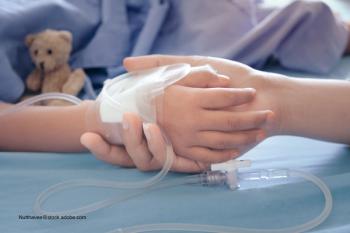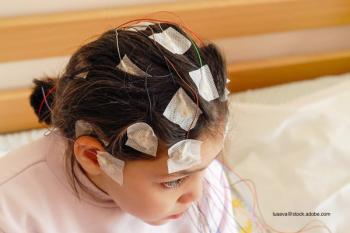
A case report examines whether a high-risk child with appendicitis will need surgery.

A case report examines whether a high-risk child with appendicitis will need surgery.

Reducing antibiotic resistance has been a high priority for quality improvement programs. How well did one program do in reducing vancomycin use?

The risk of hospital readmission has been linked to insurance status in previous research. A new investigation examines if the disparity still exists.

A study finds that the levonorgestrel intrauterine device (IUD) is successful in controlling abnormal uterine bleeding and in suppressing menses in teenagers.

Marketing for traditional cigarettes has long been curtailed to stem smoking, but the regulations haven’t always caught up with the marketing needs for vaping. A report examines the impact of promoting vaping on the prevalence of vaping.

A retrospective study reveals that children with cow’s milk allergies—and the restrictive diets they must follow—may negatively impact their growth and development in comparison to their peers with other food allergies.

There are a number of ways clinicians can tackle peanut allergies, but allergy screening and early peanut exposure are still up for debate.

Some states have used laws and regulations to help improve health outcomes. An investigation examines whether New York’s sepsis regulations helped.

How are neonatal intensive care units (NICUs) being utilized in the Kaiser Permanente Southern California health care system? A new report investigates.

The American Academy of Pediatrics (AAP) has strongly advocated that schools open in the fall with students being physically present.

The US Food and Drug Administration (FDA) approves Fintepla (fenfluramine) through Priority Review.

Immunotherapy has shown promise in treating peanut allergies. An investigation looks at whether similar results can be found when treating patients for wheat anaphylaxis.

The American Academy of Pediatrics (AAP) has issued a statement on keeping children safe from the potential harms of advertising.

For many children, a furry animal can be a best friend. An investigation looks at whether that bond can also protect against asthma and allergies.

For children with asthma, exposure to dog allergens could exacerbate outcomes.

Many parents worry that when they drop their child off at day care, they are setting their offspring up for less than optimal lifelong outcomes. A Canadian investigation indicates that parents may not need to worry so much.

A new report in the Lancet examines whether efforts to stem COVID-19 such as social distancing and wearing face masks are effective.

As tobacco use among children and adolescents continues to be a public health problem, the World Health Organization (WHO) has released a toolkit to help this group say “no” to using tobacco.

Associated with musculoskeletal pain in adults, poor sleep also could carry a similar risk for children.

Follow-up after hospitalization for mental illness is a measure of quality care, but how many children and teenagers are getting timely follow-up? A new report investigates.

Addressing a family’s needs to improve health care has been a frequent topic of discussion, and a new investigation examines whether an in-person navigation service can decrease acute health care utilization.

The parents of a healthy 20-month-old boy ask for advice about a birthmark on his lower back. The lesion is asymptomatic and has grown proportionately with their son. What's the diagnosis?

Media guidelines recommend a certain amount of activity for children, but parents may not have an accurate understanding of how much time their child is spending on mobile devices. A recent investigation provides a look into how young children are using media and for how long.

Computed tomography (CT) imaging appears to have limited use in screening for COVID-19. A new report looks at using CT imaging in children diagnosed with coronavirus disease.

A pharmacokinetic model suggests that although 4 daily doses of cephalexin are the standard of care for treating methicillin-susceptible Staphylococcus aureus (MSSA) infections, 2- or 3-dose daily regimens (BID or TID) could achieve similar results.

Contemporary Pediatrics sat down with Andrew J. Schuman, Editorial Advisory Board member, clinical assistant professor of Pediatrics, Geisel School of Medicine at Dartmouth, Lebanon, New Hampshire, and practicing pediatrician, to discuss what he’s learned about utilizing telehealth during the COVID-19 pandemic and how it’s shaped his practice.

Children are more likely to exhibit troublesome behaviors during meals if their caregivers’ use of mobile phones is “problematic,” according to a study of 84 caregivers and their children.

Many young athletes are interested in resistance training, and a policy statement update from the American Academy of Pediatrics (AAP) addresses how they can safely participate.

Children who take proton pump inhibitors (PPIs) are at increased risk of having fractures compared with those who have no PPI exposure, according to a retrospective review of information in the Pediatric Hospital Information System database. Further, likely fracture location differs between those who are exposed to PPIs and those who are not.

More doctors have gone into pediatric subspecialties over the past 15 years, which has improved access to necessary care. A new report looks into how much access has changed.